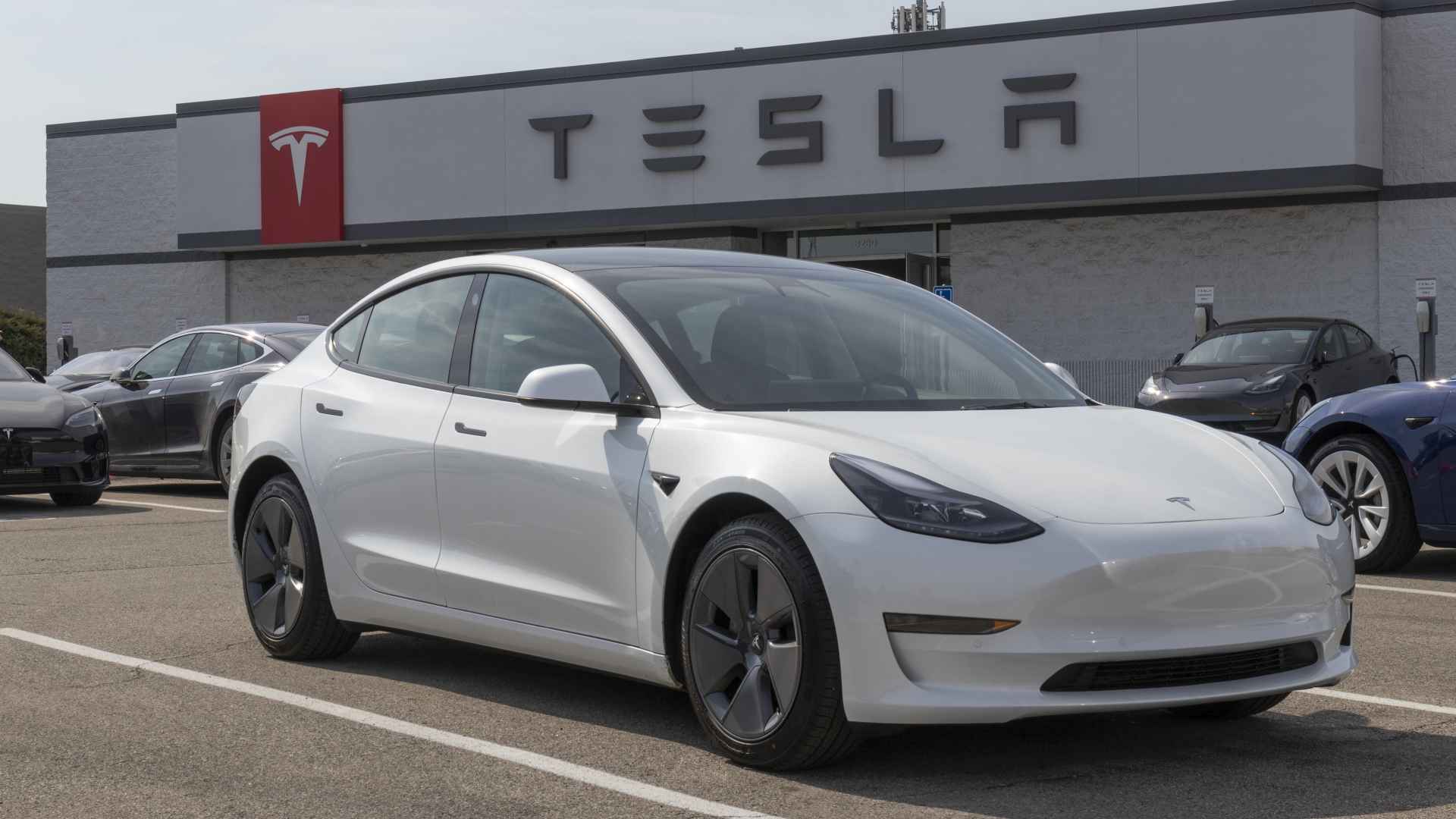
Tesla has been one of the most volatile and talked-about stocks of the past decade. But what if you ignored all the hype and simply bought $1,000 worth of Tesla stock every month since January 2020?
Find Out: Self-Made Millionaires Suggest 5 Stocks You Should Never Sell
Read Next: Warren Buffett: 10 Things Poor People Waste Money On
Using dollar-cost averaging — aka, the strategy of investing a fixed amount regularly regardless of price — a disciplined Tesla investor would have accumulated some significant wealth over the past five years and nine months.
The Numbers That Matter
From January 2020 through September 2025, buying $1,000 of Tesla stock monthly would have produced impressive results:
- Total invested: $69,000 over 69 months
- Shares accumulated: 399.43 shares
- Portfolio value: $175,912.26
- Average cost per share: $172.75
- Total return: $106,912.26 (155% gain)
These calculations use Tesla’s adjusted closing prices, which account for the company’s stock splits in August 2020 (5-for-1) and August 2022 (3-for-1). The final value uses Tesla’s closing price of $440.41 on Sept. 26, 2025.
Learn More: Barbara Corcoran: This Is the Only Investment I’ll ‘Never Sell’
How Dollar-Cost Averaging Smoothed Tesla’s Wild Ride
Tesla’s stock price has been notoriously volatile, swinging from lows around $50 (split-adjusted) to highs over $400 during this period. Dollar-cost averaging helped smooth out these dramatic price swings by purchasing more shares when prices were low and fewer shares when prices were high.
This strategy proved particularly valuable during Tesla’s rough patches. When the stock plummeted in 2022 and early 2023, monthly buyers were accumulating shares at bargain prices. Those cheaper shares contributed significantly to the overall returns when Tesla’s price recovered.
The average cost of $172.75 per share shows how this approach captured Tesla’s long-term upward trend while avoiding the impossible task of timing the market perfectly.
What This Strategy Missed
While the results are impressive, it’s worth noting what this approach couldn’t capture. A perfect market timer who bought only at Tesla’s lowest points and sold at peaks would have generated much higher returns.
Similarly, someone who invested a $69,000 lump sum at Tesla’s absolute bottom would have outperformed the dollar-cost averaging approach. But predicting these optimal entry and exit points is nearly impossible in practice.
The monthly investment strategy also meant buying shares at Tesla’s peaks, including prices above $400 per share during the stock’s various rallies. These higher-priced purchases dragged down the overall return compared to perfect timing.
The Broader Investment Lessons
Tesla’s performance over this period illustrates several important investing principles beyond just dollar-cost averaging.
Volatility can be your friend: Tesla’s dramatic price swings, which scared many investors, actually helped the dollar-cost averaging strategy by creating opportunities to buy at lower prices during downturns.
Growth stocks reward patience: Tesla’s transformation from a niche electric car company to a major automaker and energy company took years to play out. Short-term traders missed much of this value creation.
Stock splits don’t change value: Tesla’s two stock splits during this period didn’t affect the total return — they simply meant owning more shares at proportionally lower prices.
The Reality Check
Before anyone rushes to replicate this strategy, several important caveats deserve mention.
Past performance doesn’t guarantee future results: Tesla’s exceptional growth over this period reflected specific circumstances that may not repeat. The company benefited from early leadership in electric vehicles, favorable government policies and Elon Musk’s celebrity status.
Concentration risk: Putting $1,000 monthly into a single stock represents enormous concentration risk. Tesla could have just as easily declined significantly, wiping out years of investments. Most financial advisors would recommend diversifying across many stocks or using index funds.
Emotional challenges: Maintaining this strategy required ignoring constant media coverage about Tesla’s volatility, Musk’s Twitter activity and competitive threats. Many investors would have struggled to stay disciplined through the dramatic price swings.
Opportunity cost: The $69,000 invested in Tesla could have been diversified across the entire stock market, potentially with lower risk and different returns.
More From GOBankingRates
- 5 Old Navy Items Retirees Need To Buy Ahead of Winter
- I Paid Off $40,000 in 7 Months Doing These 5 Things
- How Much Money Is Needed To Be Considered Middle Class in Your State?
- 5 Cities You Need To Consider If You're Retiring in 2025
This article originally appeared on GOBankingRates.com: If You Bought $1,000 of Tesla Stock Every Month Since 2020, Here’s How Much You’d Have Now







